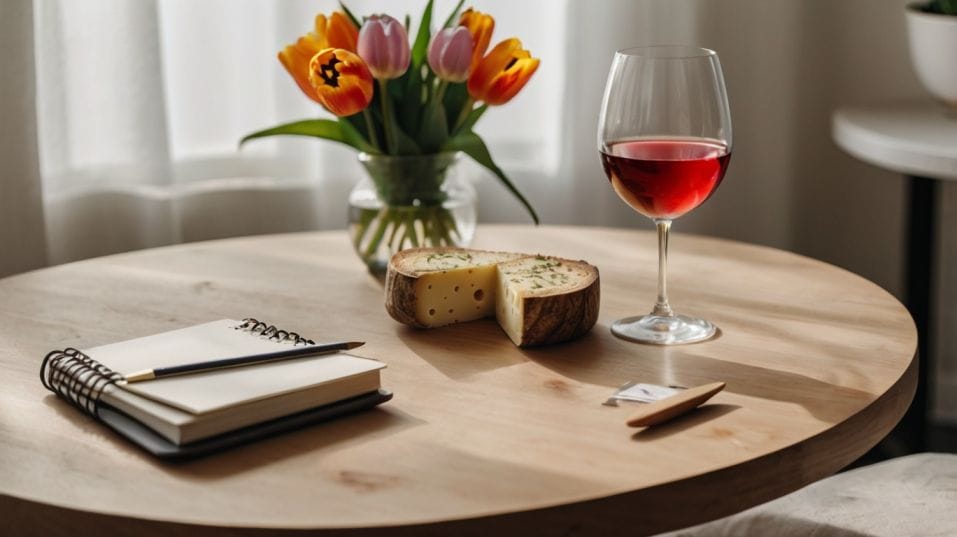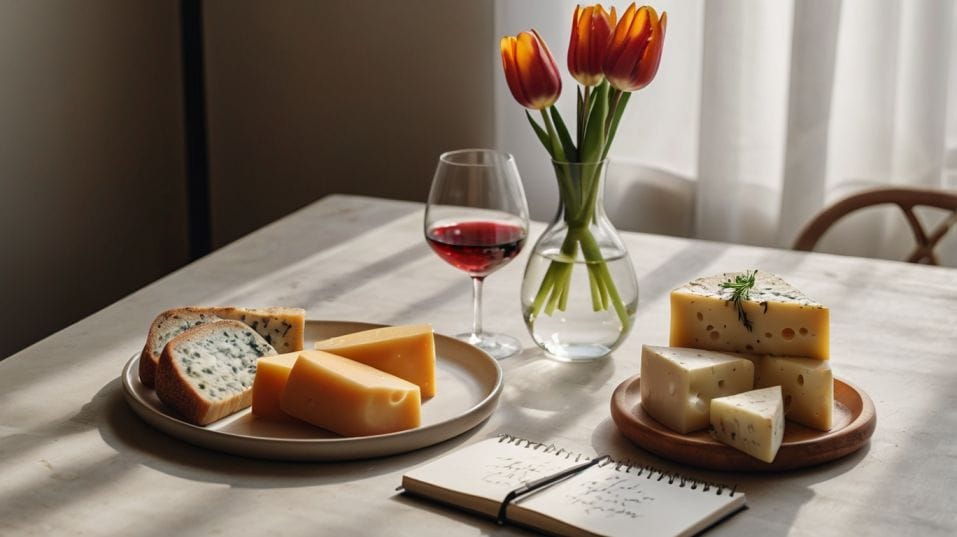Everyday Rituals That Make Wine Feel Special
Discover simple wine rituals that build confidence, sharpen your palate, and turn everyday bottles into intentional, satisfying experiences.

What if the secret to loving wine wasn’t learning more, but noticing more? You don’t need rare bottles or formal training to make wine feel special.
Small rituals—repeated with care—sharpen your senses and build confidence. It’s not about price or prestige. It’s about presence.
When you pour with intention, taste with attention, and make space for reflection, everyday wine transforms. Suddenly, the simple act of drinking becomes something richer: a practice.
Choose a Glass That Serves You—Not the Rules
You’ll hear plenty about the “right” glass for Cabernet or Pinot. That’s fine theory, but in everyday practice, what matters more is consistency and comfort.
One well-designed, versatile glass can teach you more than a rotating cast of specialty stems ever will.
Look for something with a tulip shape—wide enough to swirl, tapered enough to hold aroma. A stem helps avoid warming the wine with your hand, but the most important thing is using the same shape regularly.
Why? Because it builds a sensory benchmark. You start noticing how one wine feels thicker, smells brighter, or finishes longer than another—not because your palate suddenly transformed, but because your environment stayed steady.
That’s how skill develops: through familiar tools used with attention. Invest in two quality glasses. Clean them by hand. Handle them like instruments. They’re not fancy—they’re foundational.

Pour With Restraint to Taste With Focus
A smaller pour isn’t about etiquette. It’s about surface area and scent. When you fill a glass just a third of the way, you’re creating a space for the wine’s aromas to gather and evolve. That headspace is where most of the flavor lives.
Watch how the wine moves. Notice its color, clarity, and how it clings to the sides. Even if you’re not analyzing, you’re absorbing. That quiet, two-second observation before sipping builds your vocabulary without you realizing it.
Wine poured with care sets a pace for everything that follows. It turns drinking into tasting.
Smell Twice—Still, Then Swirled
One of the most underused wine techniques is also the simplest: smell the wine twice. Once when the glass is still, and again after a gentle swirl.
These two moments reveal different facets of the wine, and comparing them helps train your sense of aroma—arguably the most important part of tasting.
On the first sniff, you’ll often catch delicate or fleeting notes: floral hints, light fruits, subtle minerality.
After swirling, oxygen releases deeper or richer aromas—berries, spice, earth, or oak. You’re not hunting for words here; you’re building contrast.
Over time, this routine helps you predict how a wine will taste before it even hits your tongue. That’s when wine starts to feel intuitive.
Taste With a Reference Point, Not in Isolation
It’s hard to know if a wine is structured, soft, or bright without something to compare it to. So use memory. Recall the last bottle you opened.
Was it more acidic? Less textured? Even vague impressions help shape your internal map of flavor and style.
This kind of comparison trains your taste—whether it’s between wines you try weeks apart or two glasses side by side.
You start recognizing patterns: “I tend to love lighter reds with chill,” or “This white is fuller than I expected.” That knowledge sticks far more than reading a tasting note ever could.
And once you start connecting the dots, choosing wine becomes less about guessing and more about navigating with purpose.
Create a Wine Notebook That Reflects You
You don’t need to write paragraphs. In fact, short, casual notes are often more valuable than formal ones. After you taste, jot down a few quick thoughts: how it tasted, how it felt, what you ate, and—most importantly—what you noticed.
A couple of examples:
2022 Albariño – bright, almost salty. Citrus peel + stone. Great with fish tacos. Chianti Classico (unsure of vintage) – tasted better after 20 mins. Dry, earthy. Had with pizza. A little rough at first.
This is less about record-keeping and more about observation. With time, your notes become a record of your palate’s growth.
You’ll spot preferences. You’ll recall details. And when you revisit a grape, region, or style, you’ll be better equipped to pick something you’ll genuinely enjoy.
Eat With It—Even if It’s Simple
Wine reveals more when it interacts. And that doesn’t mean five-course pairings or restaurant-style plating. It can be a hunk of cheese, a bit of dark chocolate, or a last-minute bowl of pasta. The key is noticing how the wine changes with food.
Salt can soften harsh tannins. Fat makes acid feel snappier. Spices can either amplify fruit or clash with alcohol. The more you pay attention to these shifts, the more confident you become in building pairings that make sense to you.
Even mismatches have value—they teach you what to avoid next time. That kind of trial-and-error is where real expertise begins.
Make the Ritual Your Own
Wine culture can feel overwhelming because it often emphasizes mastery before experience. Flip that. Focus on doing first—consistently, attentively, and with a sense of personal rhythm.
Maybe you always open your bottle while prepping dinner. Maybe Friday evenings mean something bubbly. Maybe your ritual is as small as pouring into your favorite glass and lighting a candle at the end of a long day.
What matters is that it’s repeatable, enjoyable, and connected to your own pace of life. Over time, these rituals don’t just make wine feel special—they make it feel like yours.
Final Thoughts
Everyday wine becomes extraordinary when you bring intention to the experience. You don’t need encyclopedic knowledge or rare bottles.
You need a few key habits: a consistent glass, a thoughtful pour, a moment to smell twice, a mental (or written) note, and the curiosity to see how food and memory shape the story.
The goal isn’t to impress. It’s to connect—with your senses, with your preferences, and with the quiet pleasure of doing something well.
So tonight, open a bottle. Taste with focus. Write something down. Pair it with a snack. Add a small, new step to your ritual. Then do it again next time. That’s how wine becomes more than a drink—it becomes a practice.




